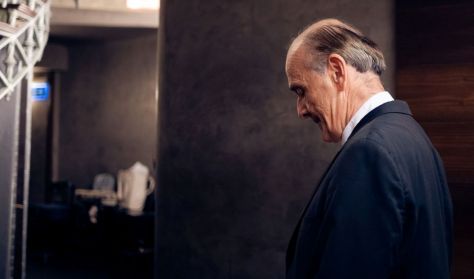
Haydn–Mozart Plus: Haydn, Weber, Mozart
Haydn
Weber
Mozart
Caputo
Takács-Nagy

Haydn
Weber
Mozart
Caputo
Takács-Nagy
January
9, 10 and 11
Liszt Academy, Grand Hall
Thursday 9th
Friday 10th
Saturday 11th
Joseph Haydn: Symphony No. 88 in G major, Hob. I:88
Carl Maria von Weber: Clarinet Concerto No. 1 in F minor, Op. 73
Wolfgang Amadeus Mozart: Divertimento in D major, K. 334
Andrea Caputo (clarinet)
conductor: Gábor Takács-Nagy
Gábor Takács-Nagy continues this year’s Haydn–Mozart series and after Symphony No. 87, also leads the performance of one of Haydn’s most popular pieces, Symphony No. 88. Although the work is a truly classical piece of music, the composer hid a little bit of fun or something unusual in each of its movements. These include the notes breaking up the slow introduction; the variations of the second movement; the rustic character of the minuet; or the finale, with birdsong, clockwork-like ticking, and explosions of fireworks. After the intermission, the concert continues with one of Mozart’s best divertimentos: a chamber piece of six movements, originally composed for six instruments. Between the two pieces, adding extra color to the program will be a surprise guest: the music of Weber, who was actually a relative of Mozart’s. BFO musician Andrea Caputo, winner of the 2024 Sándor Végh Competition, will perform the solo of this deep, dramatic clarinet concerto, almost opera-like in terms of expressiveness.
Johann Peter Tost, violinist of the Court of Esterházy, earned the distinction of having Haydn dedicate his Symphony No. 88 to him. Tost sold the sheet music to a publisher, but then “forgot” to transfer the amount received to the composer. Haydn nonetheless profited from it handsomely, since the London premiere of the piece would set the composer, who was to travel to England two years later, on the road to success. The symphony begins with an energetic, slow overture, which introduces the main part, at times playful and at times dramatic. The main theme of the slow second movement, which impressed even Brahms, is initially performed by the solo oboe and the cello, and then recurs throughout the movement with various kinds of accompaniment – including on the trumpet and the timpani. The rhythmic minuet, featuring a bagpipe-like middle part, is followed by the finale of the piece, similarly folk music-like in atmosphere, but also including an exciting canon.
Weber, considered the father of German romantic opera, composed a number of chamber pieces and concertos, including works composed for Heinrich Baermann. Weber was fascinated by the exacting way the clarinet virtuoso was able to play his instrument, demonstrating consistency from its top to its bottom. Weber’s Clarinet Concerto No. 1 made good use of his friend’s skills. Composed in 1811, the piece kicks off with dramatic, stormy music, with the orchestra’s turbulent outbreaks answered by the more thoughtful melodies of the soloist. After a seemingly mysterious overture, the slow movement delivers soft, lyrical sounds and is interrupted only for a few moments by more agitated music. In the episodes of the rondo finale, the work shifts at times to a minor scale, with the oboe sometimes competing with the clarinet before ultimately concluding the piece on a note of shared optimism.
Two violins, a viola, a double bass and two horns – this is the unusual instrumentation of Mozart’s Divertimento in D major. Born at a time of personal turmoil, the piece in its apparatus reflects the antecedents of the genre, including the serenade, while aiming well beyond the world of accompaniment music in terms of refinedness. It was likely composed for a friend of Mozart’s, Sigmund Robinig, who had just completed his legal studies. He was considered an outstanding violinist, and it is possible that the composer had him specifically in mind when writing the delicate first violin part. The opening allegro, the andante with variations, the timid minuet, the song-like adagio, the more lively minuet and the expansive rondo are perfect examples of how to create something major using limited resources.
A több mint 33 éves Budapest Klezmer Band ismét fergeteges muzsikával üdvözli a klezmer zene kedvelőit. A világszerte ismert magyar…
The divisive film Whiplash, depicting the often merciless world of a New York jazz school, premiered at the 2014 Sundance…
A Keep Floyding Magyarország és a régió legsikeresebb Pink Floydot játszó csapata. A zenekar több mint 20 éves fennállása alatt…
item(s) in basket
total:
Time limit has expired. Please, put item(s) in to basket again.